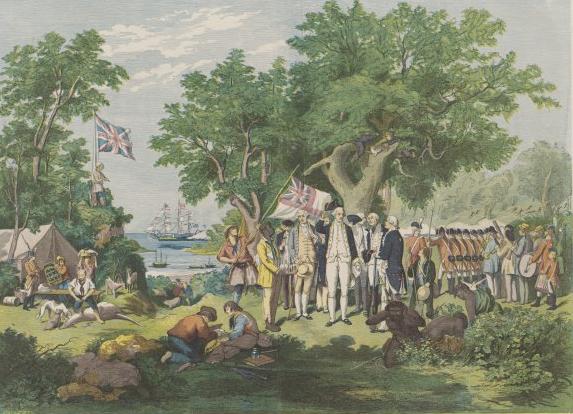|
Eudocima Jordani
''Eudocima jordani'', the Jordan's fruit piercing moth, is a moth of the family Erebidae. It is found on New Guinea and Queensland, Australia. Adults are considered a commercial pest. They damage fruit by piercing the skin to suck juice. The wingspan is about 70 mm. Adult males have subtly patterned dark brown forewings, and bright orange hindwings that have broad black margins and a large black spot in the middle. The wings have scalloped margins. The abdomen is orange. Females are similar, but have a broad yellow diagonal band across each forewing. The larvae feed on ''Tinospora smilacina ''Tinospora smilacina'' is a woody vine in the Menispermaceae family. It was first described by George Bentham in 1861. The Walmajarri The Walmadjari (Walmajarri) people, also known as Tjiwaling and Wanaseka, are an Aboriginal Australian pe ...''. External links Australian Faunal Directory {{Taxonbar, from=Q368496 Moths of Australia Eudocima Moths described in 1900 Moths ... [...More Info...] [...Related Items...] OR: [Wikipedia] [Google] [Baidu] |
William Jacob Holland
Rev William Jacob Holland FRSE LLD (August 16, 1848 – December 13, 1932) was the eighth Chancellor of the University of Pittsburgh (1891–1901) and Director of the Carnegie Museums of Pittsburgh. He was an accomplished zoologist and paleontologist, as well as an ordained Presbyterian minister. Life Holland was born August 16, 1848 in Jamaica, West Indies, the son of Rev Francis R Holland and his wife, Eliza Augusta Wolle. He spent his early years in Salem, North Carolina, later attending Nazareth Hall, a Moravian boys' school in Pennsylvania, followed by Amherst College, (A.B., 1869), and Princeton Theological Seminary (1874). At Amherst Holland's roommate was a student from Japan, causing Holland to become interested in Japanese and to learn that language well before it was a common pursuit in the United States. In 1874 he moved to Pittsburgh, Pennsylvania to become pastor of the Bellefield Presbyterian Church in the city's Oakland neighborhood. At this time Holland was als ... [...More Info...] [...Related Items...] OR: [Wikipedia] [Google] [Baidu] |
Moth
Moths are a paraphyletic group of insects that includes all members of the order Lepidoptera that are not butterflies, with moths making up the vast majority of the order. There are thought to be approximately 160,000 species of moth, many of which have yet to be described. Most species of moth are nocturnal, but there are also crepuscular and diurnal species. Differences between butterflies and moths While the butterflies form a monophyletic group, the moths, comprising the rest of the Lepidoptera, do not. Many attempts have been made to group the superfamilies of the Lepidoptera into natural groups, most of which fail because one of the two groups is not monophyletic: Microlepidoptera and Macrolepidoptera, Heterocera and Rhopalocera, Jugatae and Frenatae, Monotrysia and Ditrysia.Scoble, MJ 1995. The Lepidoptera: Form, function and diversity. Oxford, UK: Oxford University Press; 404 p. Although the rules for distinguishing moths from butterflies are not well est ... [...More Info...] [...Related Items...] OR: [Wikipedia] [Google] [Baidu] |
Erebidae
The Erebidae are a family of moths in the superfamily Noctuoidea. The family is among the largest families of moths by species count and contains a wide variety of well-known macromoth groups. The family includes the underwings (''Catocala''); litter moths ( Herminiinae); tiger, lichen, and wasp moths ( Arctiinae); tussock moths ( Lymantriinae), including the arctic woolly bear moth ('' Gynaephora groenlandica''); piercing moths (Calpinae and others); micronoctuoid moths ( Micronoctuini); snout moths ( Hypeninae); and zales, though many of these common names can also refer to moths outside the Erebidae (for example, crambid snout moths). Some of the erebid moths are called owlets. The sizes of the adults range from among the largest of all moths (> wingspan in the black witch) to the smallest of the macromoths ( wingspan in some of the Micronoctuini). The coloration of the adults spans the full range of dull, drab, and camouflaged (e.g., '' Zale lunifera'' and litter ... [...More Info...] [...Related Items...] OR: [Wikipedia] [Google] [Baidu] |
New Guinea
New Guinea (; Hiri Motu: ''Niu Gini''; id, Papua, or , historically ) is the world's second-largest island with an area of . Located in Oceania in the southwestern Pacific Ocean, the island is separated from Australia by the wide Torres Strait, though both landmasses lie on the same continental shelf. Numerous smaller islands are located to the west and east. The eastern half of the island is the major land mass of the independent state of Papua New Guinea. The western half, known as Western New Guinea, forms a part of Indonesia and is organized as the provinces of Papua, Central Papua, Highland Papua, South Papua, Southwest Papua, and West Papua. The largest cities on the island are Jayapura (capital of Papua, Indonesia) and Port Moresby (capital of Papua New Guinea). Names The island has been known by various names: The name ''Papua'' was used to refer to parts of the island before contact with the West. Its etymology is unclear; one theory states that ... [...More Info...] [...Related Items...] OR: [Wikipedia] [Google] [Baidu] |
Queensland
) , nickname = Sunshine State , image_map = Queensland in Australia.svg , map_caption = Location of Queensland in Australia , subdivision_type = Country , subdivision_name = Australia , established_title = Before federation , established_date = Colony of Queensland , established_title2 = Separation from New South Wales , established_date2 = 6 June 1859 , established_title3 = Federation of Australia, Federation , established_date3 = 1 January 1901 , named_for = Queen Victoria , demonym = , capital = Brisbane , largest_city = capital , coordinates = , admin_center_type = Administration , admin_center = Local government areas of Queensland, 77 local government areas , leader_title1 = Monarchy of Australia, Monarch , leader_name1 = Charles III , leader_title2 = Governor of Queensland, Governor , leader_name2 = Jeannette Young , leader_title3 = Premier of Queensland, Premier , leader_name3 = Annastacia Palaszczuk (Australian Labor Party (Queensland Branch), AL ... [...More Info...] [...Related Items...] OR: [Wikipedia] [Google] [Baidu] |
Wingspan
The wingspan (or just span) of a bird or an airplane is the distance from one wingtip to the other wingtip. For example, the Boeing 777–200 has a wingspan of , and a wandering albatross (''Diomedea exulans'') caught in 1965 had a wingspan of , the official record for a living bird. The term wingspan, more technically extent, is also used for other winged animals such as pterosaurs, bats, insects, etc., and other aircraft such as ornithopters. In humans, the term wingspan also refers to the arm span, which is distance between the length from one end of an individual's arms (measured at the fingertips) to the other when raised parallel to the ground at shoulder height at a 90º angle. Former professional basketball player Manute Bol stood at and owned one of the largest wingspans at . Wingspan of aircraft The wingspan of an aircraft is always measured in a straight line, from wingtip to wingtip, independently of wing shape or sweep. Implications for aircraft design an ... [...More Info...] [...Related Items...] OR: [Wikipedia] [Google] [Baidu] |
Tinospora Smilacina
''Tinospora smilacina'' is a woody vine in the Menispermaceae family. It was first described by George Bentham in 1861. The Walmajarri The Walmadjari (Walmajarri) people, also known as Tjiwaling and Wanaseka, are an Aboriginal Australian people of the Kimberley region of Western Australia. Name The two names reflect different Walmadjari preferences. Their western bands accept ... name for this plant is ''Wararrkaji''. References {{taxonbar, from=Q17804418 Menispermaceae ... [...More Info...] [...Related Items...] OR: [Wikipedia] [Google] [Baidu] |
Moths Of Australia
Moths are a paraphyletic group of insects that includes all members of the order Lepidoptera that are not butterflies, with moths making up the vast majority of the order. There are thought to be approximately 160,000 species of moth, many of which have yet to be described. Most species of moth are nocturnal, but there are also crepuscular and diurnal species. Differences between butterflies and moths While the butterflies form a monophyletic group, the moths, comprising the rest of the Lepidoptera, do not. Many attempts have been made to group the superfamilies of the Lepidoptera into natural groups, most of which fail because one of the two groups is not monophyletic: Microlepidoptera and Macrolepidoptera, Heterocera and Rhopalocera, Jugatae and Frenatae, Monotrysia and Ditrysia.Scoble, MJ 1995. The Lepidoptera: Form, function and diversity. Oxford, UK: Oxford University Press; 404 p. Although the rules for distinguishing moths from butterflies are not well esta ... [...More Info...] [...Related Items...] OR: [Wikipedia] [Google] [Baidu] |
Eudocima
''Eudocima'' is a genus of moths of the family Erebidae with numerous tropical species. The genus was first categorised by Gustaf Johan Billberg in 1820, and species currently in the genus have been placed under a range of other genera in the past. Adult moths in the genus are known for puncturing and feeding on the juices of fruits, because of which they are considered as pests by horticulturists. Description Palpi with second joint thickened and reaching vertex of head, and blunt naked third joint. Antennae minutely ciliated in male. Metathorax have slight tufts. Abdomen clothed with coarse hair on dorsum. Tibia spineless and clothed with long hair. Forewings with arched costa and acute apex. Inner margin lobed and with tufts of hair near base and at outer angle. Larva with four pairs of abdominal prolegs, where first pair rudimentary. Species The following species are recognized by Alberto Zilli and Willem Hogenes (2002).Zilli, A. & Hogenes, W. (2002)"An annotated list of the ... [...More Info...] [...Related Items...] OR: [Wikipedia] [Google] [Baidu] |
Moths Described In 1900
Moths are a paraphyletic group of insects that includes all members of the order Lepidoptera that are not butterflies, with moths making up the vast majority of the order. There are thought to be approximately 160,000 species of moth, many of which have yet to be described. Most species of moth are nocturnal, but there are also crepuscular and diurnal species. Differences between butterflies and moths While the butterflies form a monophyletic group, the moths, comprising the rest of the Lepidoptera, do not. Many attempts have been made to group the superfamilies of the Lepidoptera into natural groups, most of which fail because one of the two groups is not monophyletic: Microlepidoptera and Macrolepidoptera, Heterocera and Rhopalocera, Jugatae and Frenatae, Monotrysia and Ditrysia.Scoble, MJ 1995. The Lepidoptera: Form, function and diversity. Oxford, UK: Oxford University Press; 404 p. Although the rules for distinguishing moths from butterflies are not well establish ... [...More Info...] [...Related Items...] OR: [Wikipedia] [Google] [Baidu] |


.jpg)



